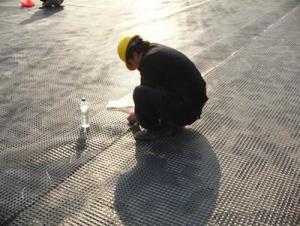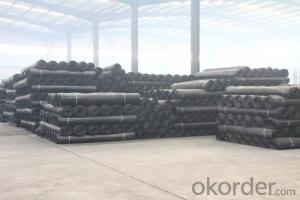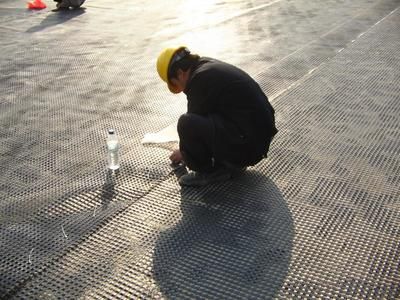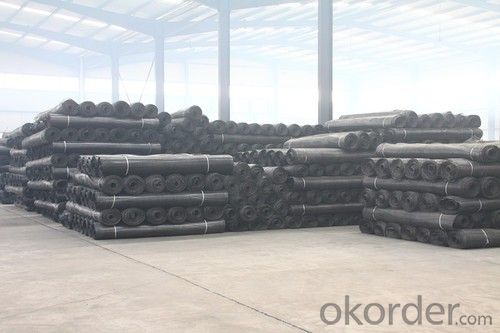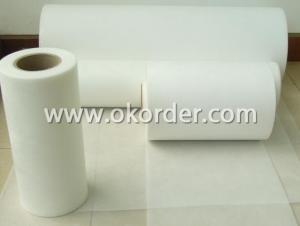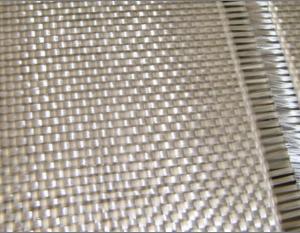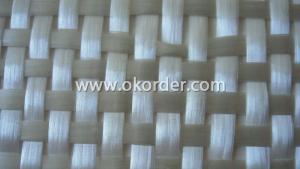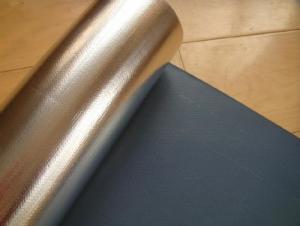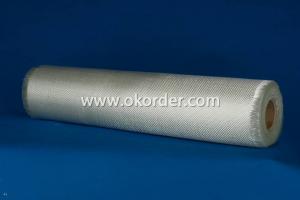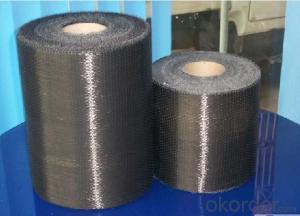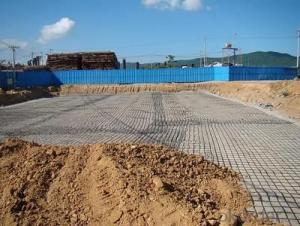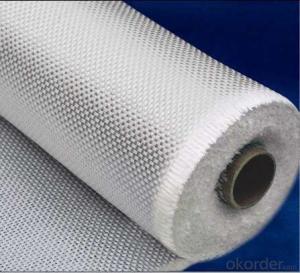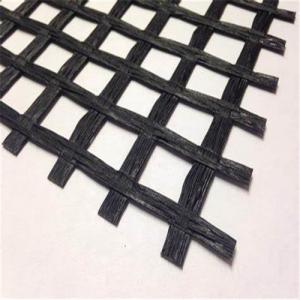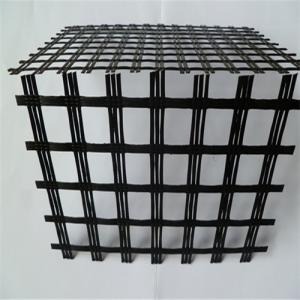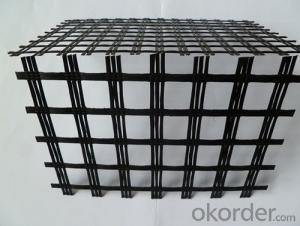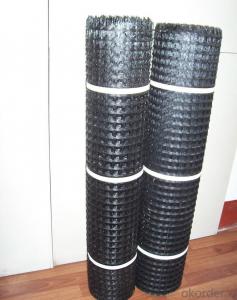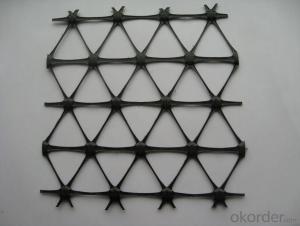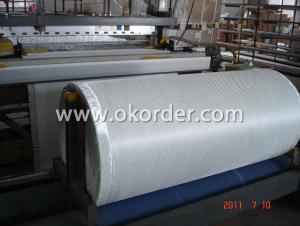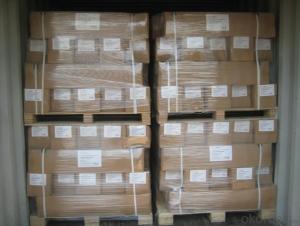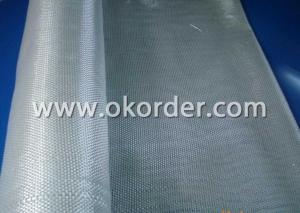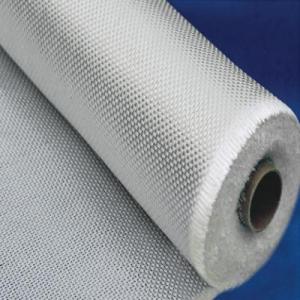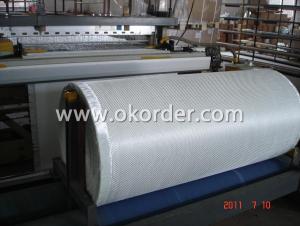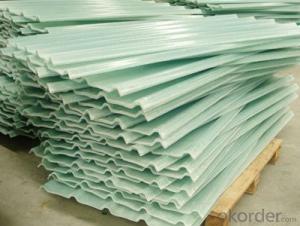Fiberglass Fireproof Fabric Geogrid for Bridge - High Quality Geogrid
- Loading Port:
- Qingdao
- Payment Terms:
- TT OR LC
- Min Order Qty:
- 1000 m²
- Supply Capability:
- 1000000 m²/month
OKorder Service Pledge
OKorder Financial Service
You Might Also Like
1.Brief Introduction
.Product has high strength, low elongation, high temperature, high modulus , light weight , good toughness, corrosion resistance , long life , etc. , can be widely used in the old concrete pavement , maintenance of airport runways , dams , river banks , while slope protection , road bridge , enhancement engineering field, to the road surface can be enhanced , reinforced to prevent pavement rutting fatigue crack , hot and cold telescopic cracks and reflection cracks below , and can the pavement load stress dispersion , extending pavement life .he high tensile strength low - elongation : Fiberglass geogrid is a glass fiber , while the high tensile strength of glass fiber , more than other fibers and ordinary metals . Its high modulus , high resistance to deformation , elongation at break of less than 3% .
2.Characteristics
3 No long-term creep : as a reinforcing material , with the ability to resist deformation under the load in the long-term creep resistance is extremely important, the glass fiber will not creep , to ensure that the products can long-term performance .
3.Application
Characteristics 4.Physical and chemical stability after special treatment agent coated handle , fiberglass geogrid to resist a variety of physical wear and chemical attack , but also to resist biological erosion and climate change to ensure that its performance is unaffected by the loss .
4.FAQ
5.good thermal stability : the melting point of glass fibers is above 1000 °C , to ensure the stability of the glass fiber geogrids to withstand high temperature in a paving job .
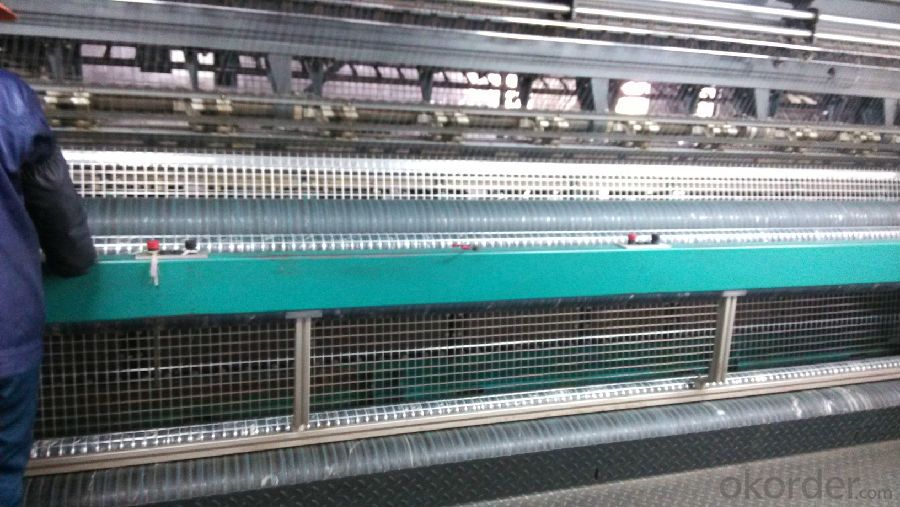
- Q: What are the different colors available for fiberglass fabric rolls?
- Fiberglass fabric rolls are available in a variety of colors to suit different needs and preferences. Some of the commonly available colors include white, black, gray, yellow, green, blue, and red. These colors are achieved through the use of dyes or pigments during the manufacturing process. The choice of color for a fiberglass fabric roll depends on various factors such as the intended application, aesthetic requirements, and visibility needs. For example, white or light-colored fiberglass fabric rolls are often used in applications where visibility or reflectivity is important, such as in safety clothing or high-visibility signage. On the other hand, darker colors like black or gray may be preferred for applications where aesthetics or light absorption are important, such as in theater backdrops or acoustic panels. Overall, the availability of different colors for fiberglass fabric rolls allows for customization and versatility in various industries and applications.
- Q: What are the different fiberglass fabric finishes for abrasion resistance?
- There are several different fiberglass fabric finishes that enhance abrasion resistance, including silicone, PTFE (Teflon), acrylic, and neoprene. Each of these finishes provides varying levels of protection against wear and tear, making fiberglass fabrics suitable for a wide range of applications requiring durability and longevity.
- Q: How to do anti-corrosion of buried metal water supply pipeline?
- : outdoor pipeline pipeline is pipe, pipe fitting and valves connected into the conveying gas, liquid or solid particles of fluid device. Because of its unique characteristics, pipeline is widely used in many industries and fields. Pipes are widely used, mainly for water supply, drainage, heating, gas supply, long-distance transportation of oil and gas, agricultural irrigation, hydraulic engineering and various industrial installations.
- Q: What are the safety precautions when working with fiberglass fabric?
- When working with fiberglass fabric, it is important to take certain safety precautions to protect yourself from potential hazards. Here are some key safety measures to consider: 1. Personal Protective Equipment (PPE): Always wear appropriate PPE, including goggles or safety glasses, a respirator or mask, gloves, and protective clothing. This will help minimize the risk of inhaling fiberglass particles, getting them in your eyes, or having direct skin contact. 2. Ventilation: Ensure that the work area is well-ventilated to prevent the accumulation of fiberglass dust or fumes. If working indoors, use exhaust fans or open windows to promote airflow and remove any airborne particles. 3. Dust Control: Minimize the generation of fiberglass dust by using wet methods, such as wetting the fabric before cutting or using a water mist to control airborne particles. Consider using a dust collection system or vacuum with a HEPA filter to capture any fiberglass dust that may be produced. 4. Cutting and Handling: When cutting fiberglass fabric, use appropriate tools such as shears or a rotary cutter to avoid fraying. Handle the fabric carefully to prevent the release of loose fibers into the air. If possible, use pre-cut fiberglass pieces to minimize the need for cutting on-site. 5. Cleanup: After completing the work, clean up any fiberglass dust or debris using a vacuum cleaner with a HEPA filter. Avoid using compressed air or brooms, as they can disperse the particles into the air. Dispose of any waste material in accordance with local regulations. 6. Hygiene: Practice good personal hygiene by washing your hands and face thoroughly after working with fiberglass fabric. Launder any contaminated clothing separately to avoid cross-contamination. 7. Training: Ensure that all individuals working with fiberglass fabric are properly trained on the potential hazards, safety procedures, and the correct use of PPE. Regularly review and update safety protocols to promote a safe working environment. By following these safety precautions, you can minimize the risks associated with working with fiberglass fabric and protect your health and well-being.
- Q: Are there any specific cleaning or washing instructions for fiberglass fabrics?
- Yes, there are specific cleaning and washing instructions for fiberglass fabrics. When cleaning fiberglass fabrics, it is important to avoid any harsh chemicals or abrasive scrubbing, as they can damage the fabric's surface. Instead, it is recommended to use a mild detergent or soap mixed with water to gently clean the fabric. It is important to rinse the fabric thoroughly with clean water to remove any soap residue. Additionally, avoid wringing or twisting the fabric as this can cause it to lose its shape or stretch. Instead, gently squeeze out the excess water and lay the fabric flat to air dry. It is also advisable to avoid exposing fiberglass fabrics to direct sunlight for prolonged periods, as this can cause fading or damage to the fabric. Following these instructions will help maintain the integrity and longevity of fiberglass fabrics.
- Q: Home improvement how to do waterproof acceptance?
- General engineering only sampling experiments on the watering pipe root, root protruding part of the chimney roof flashing, the number of extraction is a projecting roof flashing 1/3, watering not less than one hour, no leakage. If it is found that seepage and leakage, double the number of tests to be carried out, and then leakage parts, should be carried out all watering test
- Q: Can fiberglass fabric be used for roofing?
- Yes, fiberglass fabric can be used for roofing. Fiberglass fabric is a lightweight and durable material that is commonly used in the construction industry. It is known for its strength and resistance to corrosion, making it a suitable choice for roofing applications. Fiberglass fabric can be used to reinforce roofing systems, providing additional strength and stability. It is often used in combination with other roofing materials, such as asphalt or rubber, to create a more robust and long-lasting roof. Additionally, fiberglass fabric is fire-resistant, which adds an extra layer of safety to the roofing system. Overall, fiberglass fabric can be a cost-effective and reliable option for roofing projects.
- Q: What color steel plate is good for dust-free workshop?
- EPS polystyrene foam sandwich panel is composed of a color plate surface, closed self extinguishing type polystyrene foam plastic as the core material, the color pressure plate by automatic continuous molding machine with high strength after adhesive bonding and into an efficient new composite materials. Mainly used in public buildings, industrial buildings roofing, walls and electronics, medicine, food and clean workshop and the combination of cold storage, building add layer, Shangting etc. The utility model has the advantages of light weight, convenient installation, heat preservation, heat insulation, waterproof, etc., and has the characteristics of fast construction, long service life, beautiful appearance, high mechanical strength of steel materials, easy molding performance, etc..
- Q: What are the different types of fiberglass fabrics?
- There are several different types of fiberglass fabrics available, each with its own unique characteristics and applications. Some common types include: 1. E-Glass Fabric: This is the most commonly used type of fiberglass fabric. It is known for its excellent electrical insulation properties and high tensile strength. E-glass fabric is used in a wide range of applications, including boat building, automotive parts, and aerospace components. 2. S-Glass Fabric: S-glass fabric is a higher-performance alternative to E-glass. It has a higher tensile strength and better resistance to impact, making it suitable for applications that require superior strength, such as military equipment and high-performance sports equipment. 3. C-Glass Fabric: C-glass fabric is resistant to chemical corrosion, making it ideal for use in applications where exposure to chemicals is a concern. It is commonly used in chemical plants, wastewater treatment facilities, and other industrial settings. 4. A-Glass Fabric: A-glass fabric is an alkali-resistant type of fiberglass fabric. It is commonly used in the construction industry for reinforcing cement and concrete structures, such as bridges and buildings. 5. Roving Fabric: Roving fabric consists of untwisted strands of fiberglass. It is typically used in applications that require high strength and dimensional stability, such as wind turbine blades, pipes, and pressure vessels. 6. Chopped Strand Mat (CSM): CSM is a type of fiberglass fabric made from randomly oriented chopped strands held together with a binder. It is commonly used in applications that require a smooth and uniform surface finish, such as boat hulls and automotive parts. 7. Woven Roving: Woven roving is a heavy-duty type of fiberglass fabric that consists of closely woven strands. It is known for its high strength and stiffness, making it suitable for applications that require structural reinforcement, such as boat hulls, wind turbine blades, and automotive body panels. Overall, the choice of fiberglass fabric depends on the specific requirements of the application, including strength, electrical insulation properties, chemical resistance, and surface finish.
- Q: What are the differences in the quality and performance of domestic glass fiber cloth and imported fiberglass fabric?
- Glass fiber is made up of glass fiber yarn, stacked into a network structure to intercept and absorb impurities, can break the oil in the water as a knife, collect water, improve the quality of oil, and extend the life of equipment.
Send your message to us
Fiberglass Fireproof Fabric Geogrid for Bridge - High Quality Geogrid
- Loading Port:
- Qingdao
- Payment Terms:
- TT OR LC
- Min Order Qty:
- 1000 m²
- Supply Capability:
- 1000000 m²/month
OKorder Service Pledge
OKorder Financial Service
Similar products
Hot products
Hot Searches
Related keywords
